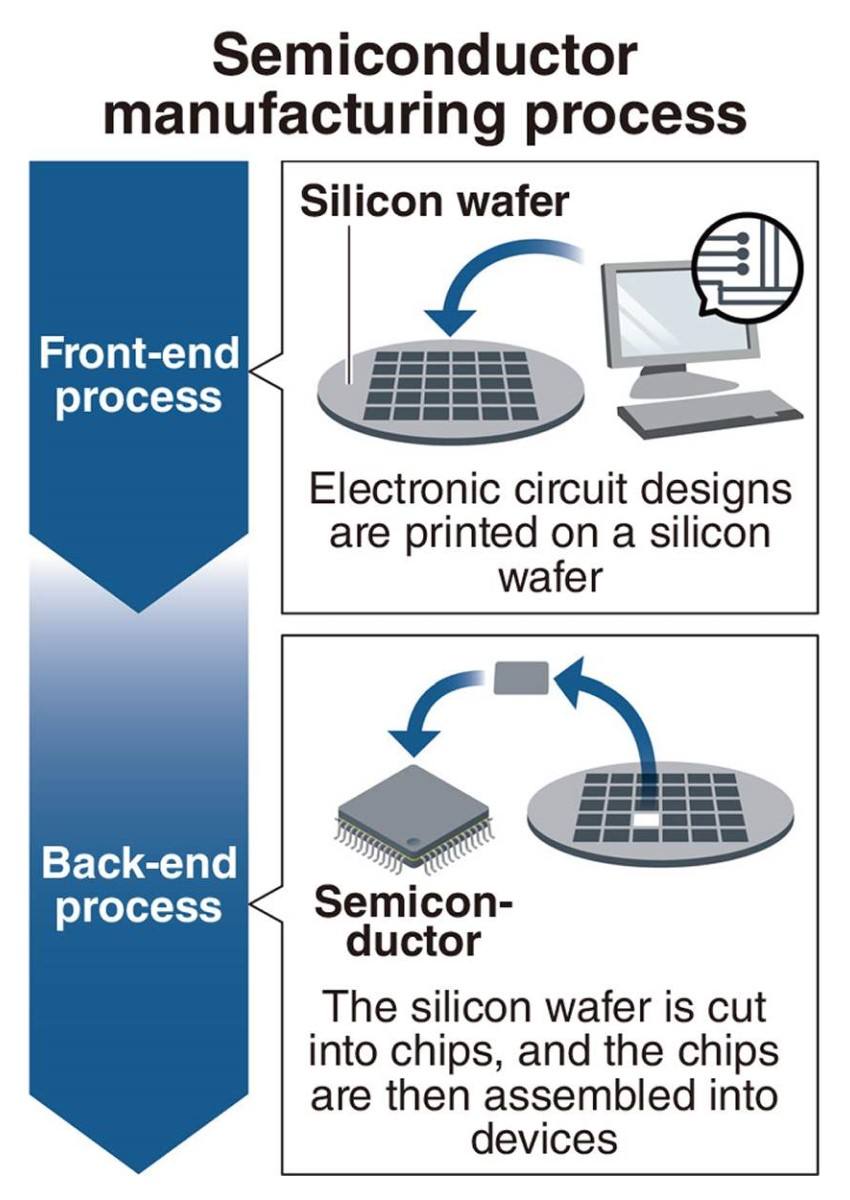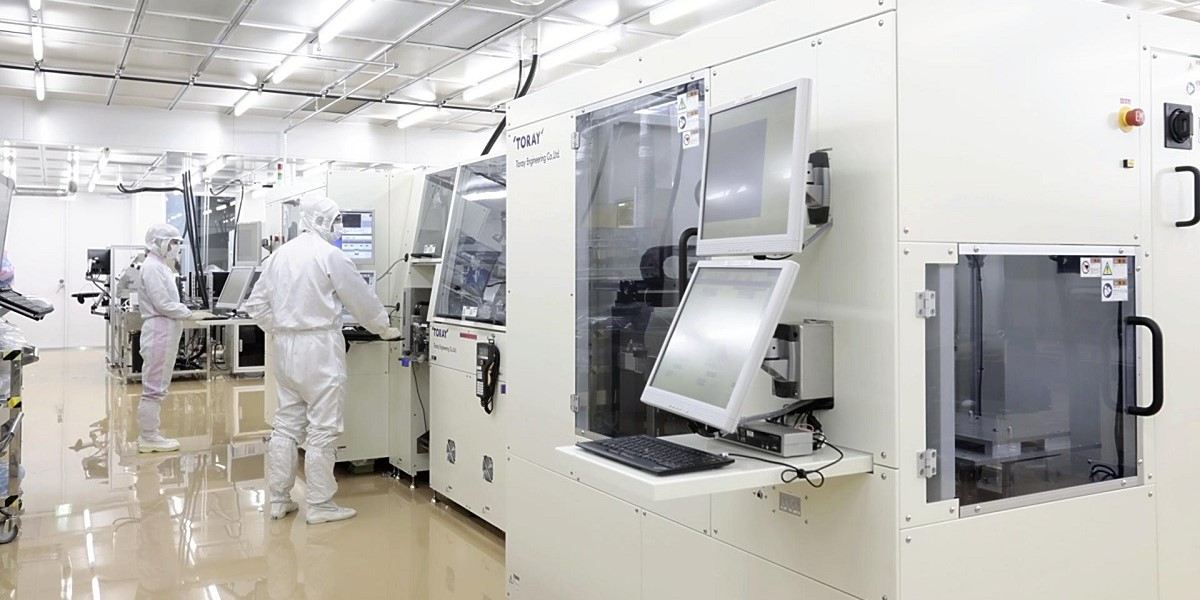
7:00 JST, March 8, 2023
Domestic producers are boosting investment and accelerating development of back-end technologies for semiconductor manufacturing.
The semiconductor manufacturing process is complex, but is broadly divided into the front-end and back-end. In the front-end process, semiconductor circuits are printed on silicon wafers. In the back-end process, the silicon wafers are cut into chips, which are then mounted on metal frames before being wired and encased.
Many Japanese firms are skilled in producing the materials used in the back-end process and assembling semiconductor devices.
Industry observers are now wondering if these companies, which have lagged behind in advanced semiconductor production, will be able to increase their presence in the industry.

Researchers are seen in a clean room developing technologies for the back-end process in semiconductor manufacturing.
Last winnable field
“Semiconductor-related materials are the last field in which Japan can win. We have no intention of hitting the brakes on investment,” said Hidehito Takahashi, president of Resonac Holdings Corp., which was established in January through the integration of Showa Denko K.K. and Showa Denko Materials Co. Resonac Holdings has the top share of the global market for many of the materials used in the back-end process, such as materials for encasing semiconductors to protect them from dust and other substances.
Resonac Holdings’ main business is focused on petrochemicals, but it plans to invest more than ¥250 billion in promising semiconductor-related businesses over a five-year period through 2026. The company is seeking to push its semiconductor-related sales to more than ¥850 billion in the year ending December 2030, about twice the amount in the year ended December 2021, which would make these businesses the most profitable in the company.
Front-end lag
Japanese companies have fallen behind in the technology required for the front-end process, namely the ability to transcribe fine circuits on silicon wafers.
In the back-end process, on the other hand, many of the country’s companies lead the world in related materials and manufacturing equipment.
Disco Corp. and Tokyo Seimitsu Co. are focused on technological development and investment for precision equipment to cut silicon wafers, while Advantest Corp. conducts technological development and investment for semiconductor performance testing.
Fujifilm Corp. is developing a chemical mechanical polishing slurry, an abrasive used in the back-end process. The product is expected to go on the market by year-end. Additionally, Canon Inc. in January introduced equipment that improves semiconductor performance by stacking chips.
Now in 3D
The back-end process has been attracting attention partly because improvements are expected in processing capacity thanks to the introduction of three-dimensional integrated circuits.
Semiconductors with high processing speeds are indispensable for automated driving and the spread of 6G, the next generation standard for high-speed, high-capacity telecommunications, but companies are approaching the limits of what they can do to improve advanced products through finer and finer circuits. Now there is hope that 3D stacking of chips in the back-end process could provide a way forward.
In 2021, Resonac and 11 other related companies established Joint2, a corporate alliance to cooperate in the development of 3D technology. The government will also provide them with up to ¥5 billion in support. At last year’s Semicon Japan, an international semiconductor exhibition, part of the venue was dedicated to the back-end process for the first time.
The market is expected to expand, too. Research firm Fuji Chimera Research Institute predicts that the global market for back-end process-related materials alone will expand to ¥690 billion in 2028, about 40% higher than the ¥480.8 billion seen in 2021. “Japanese companies are attracting attention from overseas. Their aggressive investment in technological development and enhanced production capacity will no doubt continue to grow,” said Akira Minamikawa at British research firm Omdia.
"Science & Nature" POPULAR ARTICLE
-

Genome Study Reveals Milestone in History of Cat Domestication
-

Big Leap in Quest to Get to Bottom of Climate Ice Mystery
-

Security Camera Footage Vulnerable to Outside Access; Investigation Finds 3,000 Pieces Exposed Online
-

Paws on Parade: Nairobi’s Dogs Dazzle at ‘Pawchella’
-

Japan Set to Participate in EU’s R&D Framework, Aims to Boost Cooperation in Tech, Energy
JN ACCESS RANKING
-

Keidanren Chairman Yoshinobu Tsutsui Visits Kashiwazaki-Kariwa Nuclear Power Plant; Inspects New Emergency Safety System
-

Tokyo Economic Security Forum to Hold Inaugural Meeting Amid Tense Global Environment
-

Imports of Rare Earths from China Facing Delays, May Be Caused by Deterioration of Japan-China Relations
-

University of Tokyo Professor Discusses Japanese Economic Security in Interview Ahead of Forum
-

Japan Pulls out of Vietnam Nuclear Project, Complicating Hanoi’s Power Plans






















